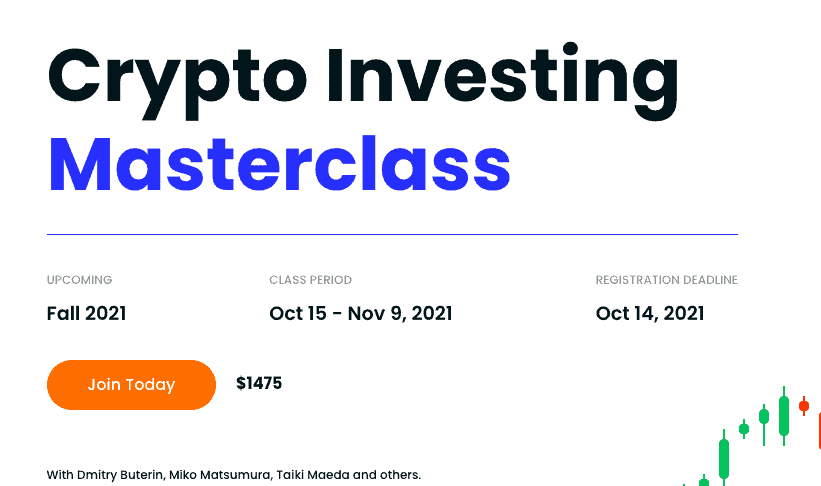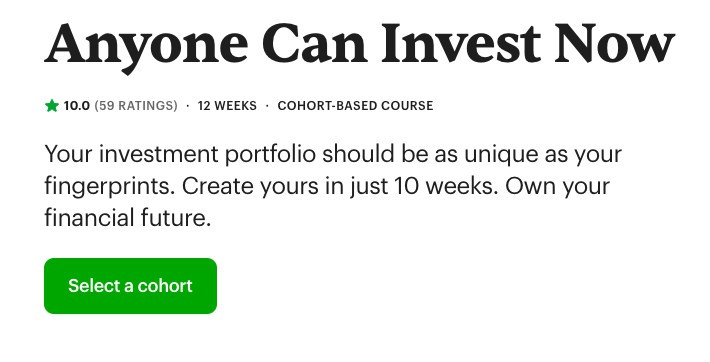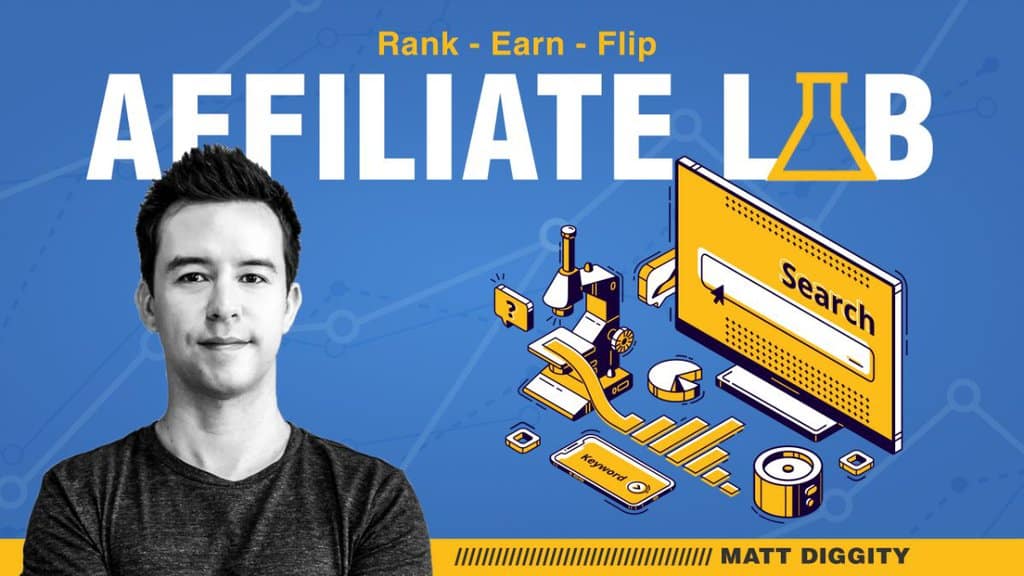Thinking of offering cohort-based courses?
You should.
Creating an online course was the single best decision of my life, but if I had the chance to do it all again, I’d have chosen cohort-based learning. There’s just so much more value in it, and it’s blowing up as you read this.
I first discovered cohort-based online courses a few months ago at an entrepreneurs meetup in Asia.
Mind. Blown.
I dove in head first and spent the last few months learning everything I could from other course creators. Now that I’ve started creating my first cohort-based course, I want to share everything I’ve learned.
In my ultimate guide to cohort-based online learning, you’ll learn:
- What are cohort-based courses and why do they kick A***?
- How to know if you should create cohort-based programs or stick to self-paced courses?
- The very basics of creating online cohort-based courses
- Some cool examples of courses and community building that might be helpful
- A meme or two about how online education is better than traditional education
Should You Create a Cohort-Based Course?

Let’s just cut straight to the chase, since this is probably why you googled this term in the first place.
The answer is probably yes.
Here’s why…
There’s a ton of money in it…
According to Crunchbase, tech companies poured more than 2 billion dollars into upskilling their employees since around the pandemic. A ton of that is going to online skills training in groups.
There’s more….
Because they’re so highly valued and completion rates are so much higher (more on this below), you can justify higher prices. Typical static courses go for anywhere between free – $300. A cohort course could easily go for $1,000 – $5,000 or even more.
Here are a few examples:
- Crypto Investing Masterclass (4 weeks): $1,475 and that’s considered a steal
- Anyone Can Invest Now (6 weeks): $4,997
- Write of Passage Online Writing School (4 weeks): Between $4,000 – $9,000
NOTE: There’s a high chance upskilling courses can be reimbursed by an employer, making it even easier to charge higher prices.
Like I said before, my only regret about my course is that I didn’t make a cohort course.
Think of it not just from a student’s perspective, but also from an employer’s perspective.
Say you want to upskill your workforce.
What sounds better? A $100 Udemy JavaScript static course with 0 guidance, or a $1,500 university-style course with a thriving community, personalized learning style, and 1-to-1 teacher guidance, including certification and “post-graduation” support?
Want to start a cohort course yet?
And the cool thing about growing a cohort learning program and community is that there are so many ways to monetize it above and beyond a typical course.
It unlocks all of these one-click passive incomes hacks:
- Selling one-off consultations
- Selling pre-recorded webinars to students
- Creating private paid groups for higher-tiered members
- Selling ongoing support to students’ employers
With cohorts and communities, you can conceivably sell a multi-week course, a certification test, personal coaching, webinars, groups, single videos, supporting documents, and other downloadables to everyone that signs up – all in a single ecosystem.
This is why I regret not doing one sooner. Courses are how you make six figures. Cohorts are how you make seven figures and beyond.
Who Are Cohort Courses For?

The key here is to understand the true value of cohort learning: relationships, community, and accountability. If your course is narrow in scope, simple, and/or very mechanical, then cohorts probably aren’t the best idea… for now, at least.
If your course is something simple like “10 recipes my mama made in Sardinia”, then yeah, you don’t need a cohort program. If it’s very mechanical, immediately actionable, and based on simple systems or processes, then a static course is fine.
For example, if you’re teaching basic Photoshop or Microsoft Excel, you don’t need a 4-week masterclass. The same goes for any basic skill that anyone can learn on their own in a short amount of time.
Examples might be:
- How to build your first WordPress website
- Learn WordPress basics in one hour!
- Storytelling: How to build a brand story (notice that this is just one cut-and-dry skill?)
- Photoshop for beginners
- Learn SEO for beginners
- Twitter for Business in 2023
Again, notice how these are narrow in scope, fairly straightforward, and relatively simple to learn on your own without guidance?
Cohort-based courses are larger in scope, interactive, and constantly evolving. They also usually require soft skills like discipline and relationship building.
For example, investing isn’t just a “learn this, and now do this” skill. It requires nuance, discipline, and money management (and everyone’s money situation is different).
Another example is an online MBA program at a university. It requires discourse, opinion, peer review, and people skills. That’s not a “point, click, download this plugin, and here’s your website” type course.
TL;DR: Cohorts are for larger, nuanced, and complex topics that usually require discourse and review.
What Are Cohort-Based Courses?

Cohort-based courses are courses where a group of students starts and ends the course at the same time and share the same course material/learning goals.
Think of it like a standard university course, except it’s online and you don’t need a Ph.D. to teach it (and it’s not tens of thousands of dollars…).
They’re different from a self-paced course in which students share the same course materials, assignments, goals, and learning schedule over a set time frame (e.g., a month, a week, or whatever) instead of just “learning on their own time”.
It’s this student interaction that makes them so valuable.
A cohort course might include things like:
- Weekly “class” meetings
- A collaborative learning community
- Live classes
- Monthly creative challenges
- Group discussion time
- Targeted feedback (i.e., you meet with a student and asses their progress)
You know, stuff like that.
Actually, we all have a ton of experience with cohort learning already.
It’s basically the same as the traditional education meat grinder we all went through as kids.
We all showed up at the same time (kind of… maybe… ), sat in the same classes, did the same assignments, and took the same worthless standardized tests that didn’t mean anything or help anyone (no agenda here…move along).
Cohort courses are like that, except they’re way more valuable to students.
Much more on that later. Let’s cover some more basics first…
The Benefits of a Cohort-Based Course for You and for Students
Like I said earlier, if I could do it all again, I’d have started with a cohort-based course instead of my first do-it-yourself course. They are – for the most part – so much more valuable for students.
Check this out…
Standard open online courses (think Udemy-type stuff) have completion rates between 3-6%.
No bueno.
But cohort learning courses convert orders of magnitude higher at around 88%, according to 2U (an online education platform).
Harvard, a little university in Massachusetts you may have heard of, claims their online business programs “graduate” 88% of students.
That’s for a few reasons:
- Accountability: It’s hard not to finish assignments when Big Brother is watching you. Joking. What really fosters accountability is relationships. Relationships are what get you up for work in the morning or force you to show up for team practice on time – people are counting on you and expect things from you. Same with cohort learning. Group sessions, group assignments, and encouragement from fellow students give that extra oomph needed to get work done even when you don’t want to. And having a supportive community means any time you’re stuck, there’s an answer.
- Strength-Based Coaching: My favorite thing about creating courses is seeing my students succeed, and it’s HARD to do with a basic content course. With cohorts though, it’s dead easy (assuming the class size is manageable). As you get to know your students, you can adapt to their strengths and weaknesses. And with one-on-one meetings and peer support, you can help fill in the gaps to maintain student engagement. Speaking of that…
- Better Student Engagement: Imagine being on a Zoom call with the entire cohort when an instant poll pops up. What should we do for homework tonight? Then, BOOM, a special guest appears calling in from their home office talking about their new successful career in project management or copywriting… or whatever this dang course is about. That type of virtual environment is a learning accelerator, and way more fun than any traditional university. That’s one of the main reasons online courses have exploded in the past decade.
- Greater Impact: It’s sad to admit after spending so long making static courses, but cohort style is just so much better for overall impact. It’s hard to learn stuff on your own. Like, nobody takes “how to transfer quantum Qubits between microchips” sitting at home on a rainy day alone. This type of truly transformational learning can only take place through an online community, step-by-step exercises, one-to-one instructor time, and trial and error.
- Better Student Outcomes: The #1 benefit of this type of course is that your students have access to you. That’s especially why working professionals (and the companies that employ them) are switching to cohort-type learning programs in droves. You can provide career guidance, help them form new ideas, forge important connections, and give them all the tools they need to actually apply what they’ve learned. In static courses, it’s basically just “here’s some content. Do something with it”. A cohort program is almost like running your own university.
That’s all fine and dandy… but what’s in it for you?
The good news is that cohort education is insanely valuable for your personal brand in a few powerful ways:
- You can charge more money: My first course was $297. Typical Udemy courses are less than $100. But a group course with personal instruction from you… now that’s priceless. It’s hard to convince someone to spend more than a few hundred dollars on a basic course. Actually, high-ticket courses like eCom business courses are usually somewhat cohort-based anyway now and come with a thriving community and hands-on instruction from experts. If you want to make thousands of dollars per student, you better start offering some sort of hands-on learning.
- Nobody can copy you: Ask me how I know about course piracy. It’s a B****. Hell, you don’t even need pirates. Once word gets out about your course, there will be blood in the water and others will start asking your students to share info. Previous students will probably share what they’ve learned with others – get used to it. It’s going to happen. But personal access to you can’t be copied (yet…).
- It’s the best brand-boosting asset you could have: A cohort course makes you look like a real professor, and all that student instruction time is gold for your brand. If you can get a dozen or more people to pay to be on calls with you AND be happy about it, then you’re either exceptionally good-looking or really good at your job (or both…). This is how you start getting podcast appearances, high-priced coaching calls, speaking gigs, and a star on the Bollywood Walk of Fame.
How to Create Your First Cohort-Based Course
Designing cohort-based courses is a bit trickier than building normal courses. You need to think way further ahead and make sure you plan enough free time to teach.
By the way, if you aren’t already an expert in your topic, you should not be teaching an online cohort. They will sniff out fraud in two seconds. Don’t do it.
With that in mind, we’re going to skip the “deciding on a topic” BS, and get straight into how to create cohort based courses.
Step 1 – Decide on a Length
If this is your first course, keep it short and sweet.
The longer you go, the more chances you have to screw things up. I spoke to a friend of mine recently that recommended I do a 2-week SEO boot camp to start, and I see the value in that now.
I originally wanted to do a 4-6 week mega-masterclass, but I see the downsides already.
It’s like anything else in online business: start small and iterate. If you hold a 6-week boot camp and it turns out to be garbage, guess who’s getting blasted all over the interwebz? You. Yes, you, “Steve”.
If it’s a $400-$500 boot camp, expectations will be way lower than a $2,000 6-week masterclass.
Get what I mean?
Step 2 – Decide on Format
How are you going to do this whole thing?
How many group meetings? What about your course community – will it be multi-tiered with paid groups or entirely open and free? Group coaching or 1-to-1 coaching? Wait, how many people are even taking this course?
These are all things you need to think about NOW, BEFORE they’re a problem.
The cool thing about cohorts is they can be anything you want them to be: all videos with private calls, group Zoom meetings, half pre-recorded videos and half live streams, or even half online and half physical location.
It’s up to you.
Most are hybrid with some pre-recorded material plus Zoom-style instruction or meetings, so start there. Remember, simple is better in the beginning.
Here’s a good framework to start:
- At least 10 videos of pre-recorded course content (students should watch videos at the same pace)
- 2 weekly live sessions
- One 1-to-1 assessment per week
- An online chat community for students
Remember, you are the product. You are what your students are paying for. The more they pay, the more of you they deserve. How much do you want to give?
Step 3 – Choose a Platform
There’s nothing I hate more than affiliates schilling for online platforms. It’s nauseating.
Anyways, I highly recommend Kajabi for cohort courses for one simple reason: it’s the only platform that’s built for community courses, brand building, AND course marketing all in one.
I use Kajabi now and don’t know what I would do without it. It’s totally changed my course business.
With just one tool, you can:
- Host a community
- Create, host, and schedule pre-recorded content
- Sell one-off products to your community
- Build a legit website for your course
- Create an entire sales pipeline
- Take things to the next level with a podcast and even a mobile app, so your students can take you everywhere
If you need it, Kajabi can do it. I know it sounds like I’m overselling it, but there’s no other way to say it. Kajabi isn’t cheap, but it’s the only tool you’ll ever need.
If you really don’t have the budget right now, Mighty Networks is a solid substitute, but doesn’t offer nearly the same control over content and definitely nowhere near the same marketing functionality.
My advice is if you just want to focus on the community aspect, Mighty Networks is probably the best. But if you want to build a legit cohort course, community, and personal brand empire, Kajabi is the only tool that can get you there.
Step 4 – Create an Outline
Outline EVERYTHING.
Not just videos, but EVERYTHING. Documents, live sessions, 1-to-1 sessions, and videos.
Start with the broader goal (e.g., obtaining financial security), then break it down into smaller topics like “investing, money management, and tools”.
Then, break those down into smaller concepts and make a video for each along with supporting documentation.
For things like a 1-to-1 session, outline which questions you’ll ask, ways to assess the student’s progress, and possible solutions to common problems you foresee.
That type of stuff needs to be at least brainstormed before you start making the course.
Step 5 – Upload and Test
Upload all of your content and do either a free or super-discounted beta test with highly targeted students.
Ask friends, post on Facebook, look in groups, run some ads, go on to freelancing platforms – I don’t care what you do, just find people.
This will help you work out the kinks, get more confidence, and, more importantly, generate some buzz. This leads me to the final step.
Step 6 – Ask for Testimonials
This is by far the most important part.
Video testimonials of happy students singing your praise are worth more than gold.
If your student experience is any good, your first new cohort will love it. Just ask politely when the course is finished for a written or video testimonial. You’ll get a few for sure.
NOTE: You should 100% offer a money-back guarantee. I don’t on my static course, but group courses are way different. You’re way less likely to get scammed.
The Best Cohort-Based Courses for Inspiration
Not sure why you’re still here and not making scrillions on your first group course yet, but let’s cover some high-ticket courses from the world’s top instructors for a little inspiration.
These instructors are killing it right now.
Let’s check out a few:
-
Write of Passage

Dude, for this price it better be good.
You can really learn a lot from this guy, though. For one, charge a S*** ton of money for things.
Second, offer different tiers with gradually increasing access to you. David Perell’s lowest tier gets you 12 live sessions, but his arm-and-a-leg AND your firstborn tier gets you unlimited access.
Steal this idea.
-
Crypto Investing Masterclass

$1,475 bucks for 4 weeks of hands-on investment advice? Not bad.
Module 1 better be how to build a damn time machine, because not sure what other great advice you can get about investing in crypto.
But notice how these guys keep it short and sweet? Not even 4 weeks. And their structure is on point. 1 hour bi-weekly office hours, materials prepared for every class, and lifetime access to BlockGeeks software included. Solid value adds there.
-
Anyone Can Invest Now

Lesson #1, here again, is to just charge as much as humanly possible and pray.
Kidding…
Andy Gupta charges $4,997 because he can. He’s got a perfectly targeted audience, a lifetime’s worth of expertise, and a ton of social proof plus a high-value skill. The guy worked at Goldman Sachs and taught at Harvard.
Life pro tip: teach at an Ivy League school if you want to charge a lot for your courses.
For example, say you’re some tech guy with a 150k a year job, but no idea what to do with your money…well, why wouldn’t you pay $5,000 to learn how to get your money to start making money for you?
The best part of his sales page is he has it all mapped out from week 1 to week 10 with a ton of great testimonials. 10/10 here, Andy.
Cohort-Based Courses F.A.Q.
Q: What is a cohort-based study?
A: A cohort-based study is when a group of students all take the same course at the same time, sharing the same class time, educational content, learning materials, and goals. It’s basically the same as the traditional physical classroom that you probably went to school in, except it takes place online.
Q: What is cohort vs. self-paced?
A: The difference between cohort vs. self-paced courses is that one is done in a group with regularly scheduled meetings and office hours while the other one is done “on your own time” with pre-recorded materials. They both share similar characteristics but are different at their core.
Q: What are examples of cohort study?
A: Examples of a cohort study could be a typical university class, an online MBA program, or any type of structured, scheduled learning done by a group in any setting. It could be online, in-person, or some hybrid of the two using tools like Zoom or Slack plus online videos.




